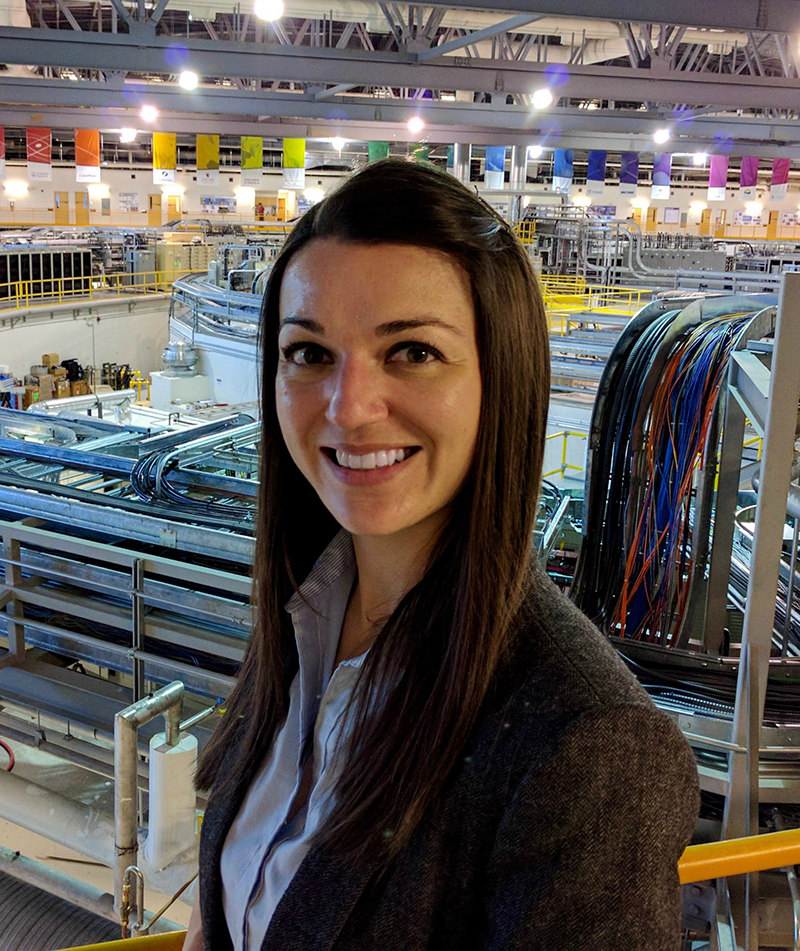Skeleton keys: Scientist to study effects of opioid addiction on bones
Bones are a living record that constantly change over a person’s life. Forensic anthropologists are tasked with deciphering clues from bones, and their study of skeletal remains aids in the identification of unknown individuals. By working to assess the age, sex, height, ancestry and unique features of a skeleton, they provide important keys to identifying victims and solving cases.
For Dr. Janna M. Andronowski, a forensic anthropologist and recent faculty addition to our Department of Biology, the study of bone adaptation, aging and disease is a focus of her research.
Video: A tour of the lab
With a two-year grant of $370,153 from the National Institute of Justice, Andronowski and her lab can research the effects of one of our country’s costliest and fastest-growing epidemics — opioid addiction — on bone remodeling, and the body’s continuing process of formation and destruction of bone tissue. Andronowski and her team will use innovative 3D X-ray imaging technology to describe how opioids impact the microscopic bone structures used to estimate age-at-death in forensic anthropology.

Dr. Janna M. Andronowski
“Deaths related to opioid addiction have become far too common in America, and the misuse and addiction to opioids is a serious public health crisis,” Andronowski says. “The effects of disease on human bones can impact age-at-death estimates, and prolonged drug use is no exception.” For example, a victim may have been in their twenties at the time of death, but the impact of long-term opioid addiction on their bones could tag them as being in their fifties, or older.
Implications of the effects of long-term opioid use on bones are critical, given that many of the skeletal remains examined by forensic anthropologists come from marginalized individuals with a history of substance abuse and overall poor health, explains Andronowski, whose previous experience includes working with the Forensic Anthropology Unit at the Office of Chief Medical Examiner in New York City.
“Current evidence suggests that opioids upset the balance of bone remodeling toward more destruction and less formation of bone,” Andronowski says. “Thus, current microscopic methods developed on healthy cases may not be useful in the assessment of such individuals, resulting in severely compromised age-at-death estimates.”
Given the limited data available related to the prolonged impact of opioid abuse on bone turnover, researchers like Andronowski want to further understand the underlying biological processes to improve the applicability of histological age-estimation methods and scientific standards within the field of forensic anthropology.
“The ultimate goal of this work is to discover the true impact of opioid abuse on bone microstructure and prepare new guidelines for routine microscopic analysis,” says Andronowski.
Learn more by visiting the Andronowski Lab online.
Related:
►Forensic anthropologist says opioid use may make identifying skeletal remains more difficult, Akron Beacon Journal.
►New Study Funded by NIJ Research Grant to Focus on Opioid Addiction’s Effects on Bones, Digital Journal.
Media contact: Lisa Craig, 330-972-7429 or lmc91@uakron.edu.
